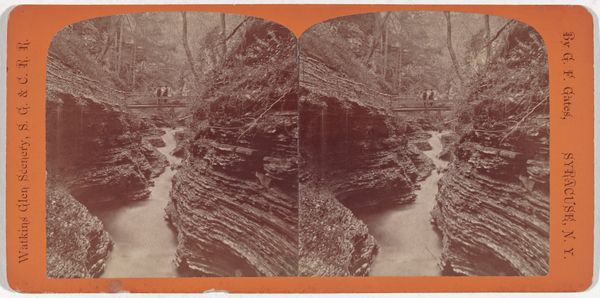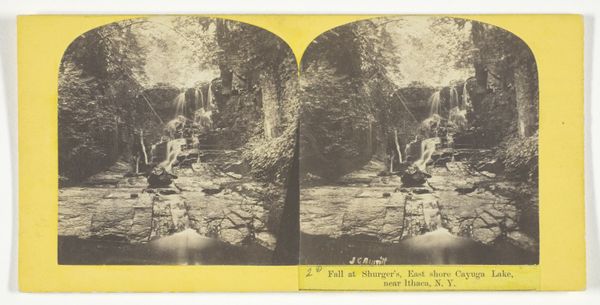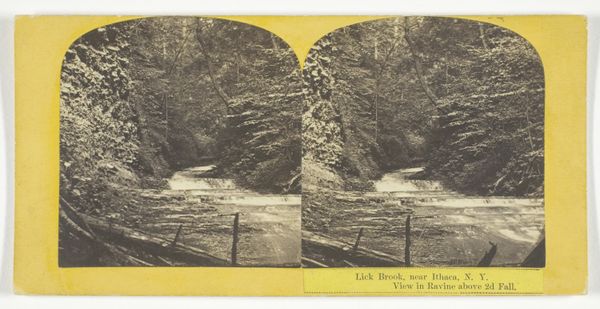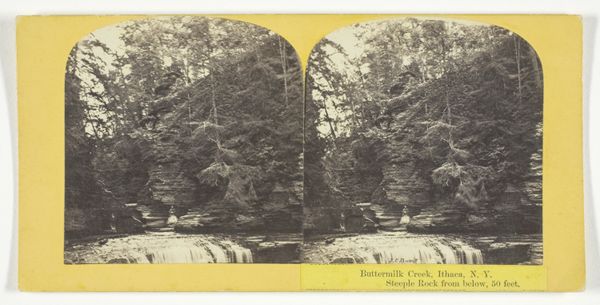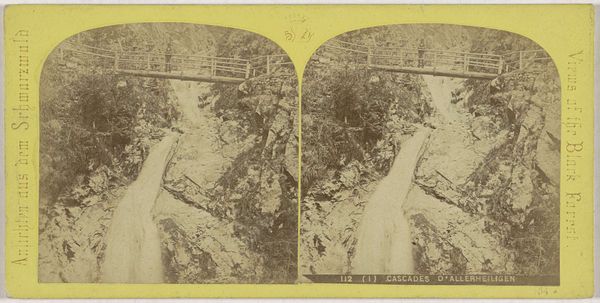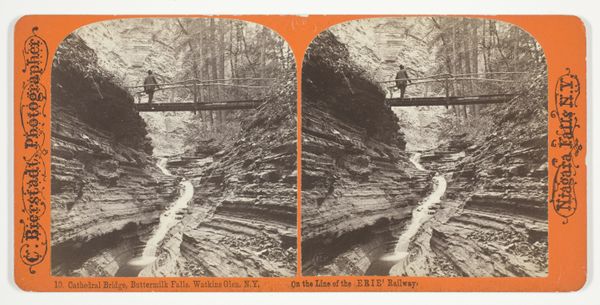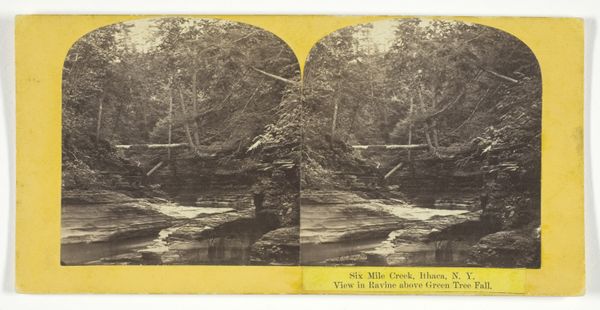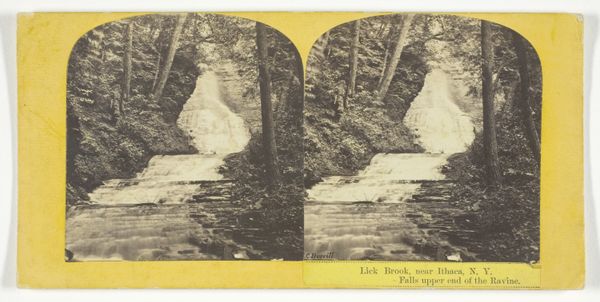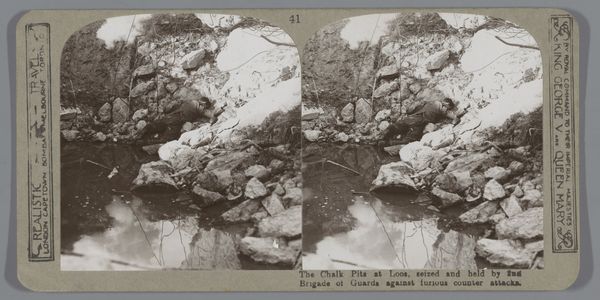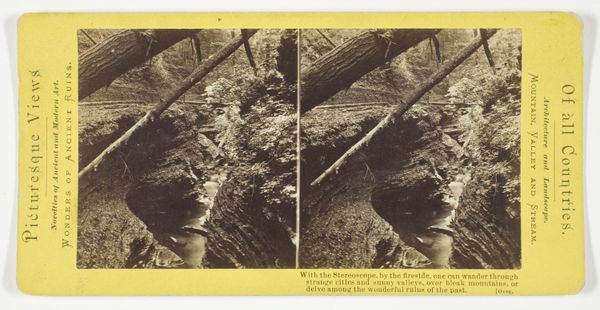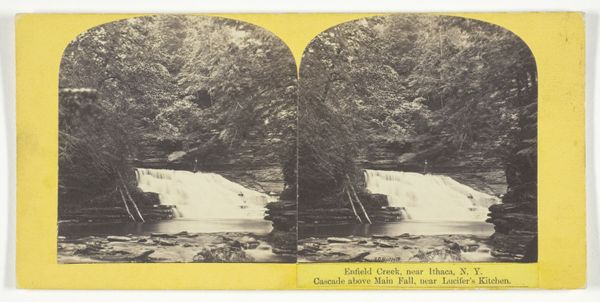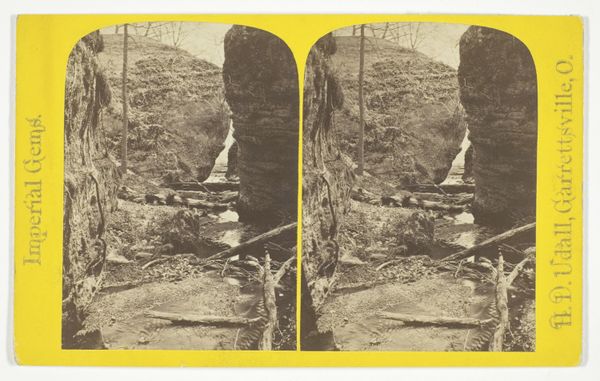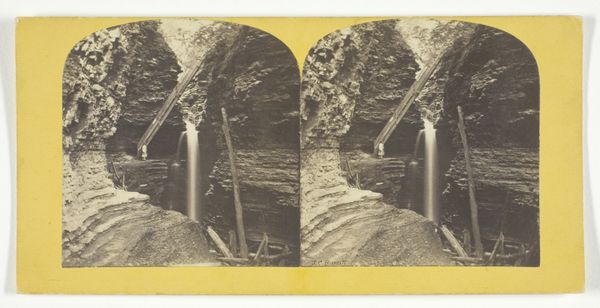
Six Mile Creek, Ithaca, N.Y. Well's Fall, looking down 1860 - 1865
0:00
0:00
print, photography
#
16_19th-century
# print
#
landscape
#
photography
Dimensions: 7.5 × 7.2 cm (each image); 8.4 × 17.1 cm (card)
Copyright: Public Domain
This stereograph of Six Mile Creek in Ithaca, New York, by J.C. Burritt, is an early example of mass-produced photography. This card combines two nearly identical photographs that, when viewed through a stereoscope, create a three-dimensional image. The photographic process itself speaks to both artistry and industrialization. It involved carefully coating a glass plate with light-sensitive chemicals, exposing it in the camera, and then developing the image. This was all skilled labor, but of a different kind than painting or sculpture. What is depicted here is a natural scene, which may have served as a form of manufactured escape from urban industrial life. Producing these stereographs was labor intensive, yet they were made in multiples, intended for popular consumption. This speaks to the democratization of image-making, and it is a reminder that even early photography had a foot in both the art world and the marketplace. By considering the materials and means of production, we can see how deeply intertwined these two worlds really are.
Comments
No comments
Be the first to comment and join the conversation on the ultimate creative platform.
